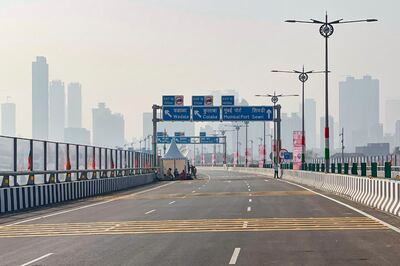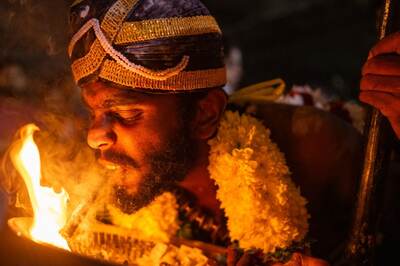
views
2019 is almost upon us, bringing with it the anticipation of the World Cup. While Team India is prepping for it, or so one hopes, fans are optimistic about the performance of the men in blue. Can this team match the bravado of Dada’s iconic shirtless moment at Lord’s? I wouldn’t complain if the series also doubled up as the denouement for MS Dhoni’s career. In all this, I, and many like me, hope to wing a ticket or two for some of India’s matches. I can’t think of a better way to tick off a stadium like Lord’s or Trent Bridge on my bucket list.
Speaking of bucket lists, a conversation with friends over beer spurred some debate about the most iconic stadiums in the world. It’s difficult to narrow the list down to, say, 10 of the greatest cricket grounds across the world. Nonetheless, here’s an attempt.
Lords:
Well, of course, Lord’s tops the wishlist. The home of cricket. If you’ve ever wondered about its name, it is named after its founder Thomas Lord. It is located in St John’s Wood in London. As you’d expect, it is the home of the ECB. But not the ICC, which moved out in 2005. Many Test playing nations played their first Test at Lord’s – West Indies in 1928, New Zealand in 1931, India in 1932, Pakistan in 1954, Sri Lanka in 1984, and Bangladesh in 2005.
I’d imagine every cricket fan harbours a desire to watch at least one match at this iconic ground. Interestingly, with a seating capacity of approximately 30,000, Lord’s isn’t really the biggest ground. Currently, with regards to capacity, the Melbourne Cricket Ground, or MCG as we know it, with a seating capacity of roughly 100,000 is the biggest cricket stadium in the world.
What Lord’s lacks in quantity, it makes up for in quality. Watching a match here is like being a part of history. The stadium that’s been around since the Victorian-era, has enough and more for you to experience. Besides the ongoing match, I mean.
The original Lord’s ground used to be where London’s Dorset Square is located today – about 1.5 kms away.
Founded in 1814, the current location, the third incarnation of the ground was built for the members of the Marylebone Cricket Club. Ever since, the ground has continued to be their home, and the laws set by the MCC tend to set the standard for the sport.
A game at Lord’s isn’t just a fan’s dream but every player’s too. To date, the honours board in the dressing room lists the names of the best performers in the games held here, for both home teams and visitors. Score a 100 or get 5 wickets, and your name is etched in history.
Lord’s has hosted four world cup finals, and over 130 test matches. It is a favourite with Indian fans because India won their first world cup here.
The stadium offers a tour that can be booked for roughly Rs. 2300. If not for a match, you could book yourself on one of these tours, and visit the oldest cricket museum which hosts the sport’s most celebrated memorabilia, including the Ashes urn won during England’s match against Australia in 1884.
Old Trafford, Manchester:
Old Trafford is a regular when teams tour England, and usually sees a full house on marquee tours. It is the third home of the Lancashire County Cricket Club. The ground saw a full house of 22,000 spectators for the India-Pakistan match in the 1999 Cricket World Cup.
This ground was established in 1857 and hosted its first Test in 1884 between England and Australia. Its first ODI match was on August 24, 1972 between England and Australia. This ground has hosted 73 Tests, the third highest number in England, behind Lord’s and The Oval.
The wickets here are laid along an East-West axis, which is rather unusual for a test match venue. This has often caused problems for batsmen at the Brian Statham End at sunset.
Old Trafford was the venue for Jim Laker’s famous 19-wicket haul. In 1956, on an old-fashioned “sticky wicket”, Laker demolished the Australian batting lineup, taking 19 wickets and conceding a mere 90 runs. That bowling performance included a 10-wicket haul in the first innings!
Another iconic moment at Old Trafford was Shane Warne’s ball-of-the-century that bowled Mike Gatting around his legs, leaving the batsmen, and spectators, bamboozled. Sachin Tendulkar also scored his first Test century at Old Trafford.
The cricket ground is near the Old Trafford football stadium, which is a five-minute walk away.
In 1999, the Old Trafford Lodge was opened. This hotel has 68 rooms, 36 of which provide unobstructed views of the playing surface – an unusual use of space, but one that has proved extremely successful, generating income all year round for the club.
SCG, Sydney:
Often referred to as the cricketing cathedral, the Sydney Cricket Ground is famous for being one of the most spin-friendly grounds in the otherwise pace-friendly Australia. Founded in 1848, this ground can seat 44,000 fans.
The ground was home for the likes of Victor Trumper and Sir Don Bradman. A 12 year old Bradman is known to have said this about the stadium, “I shall never be satisfied until I play on this ground” and what a game he played! His highest score here was 452 not out for North Wales against Queensland in 1929-30. Ricky has made six triple digit scores here, the most by any player.
In addition to the batsmen, bowlers too have enjoyed their fair share of success here. The Australian series against the West Indies in 1984-85 comes to mind. Bob Holland and Murray Bennett bowled Australia to a famous win here. South Africa’s Fanie De Villiers had a career-defining match haul of 10/123 during the 1993/94 series.
The picturesque Members Pavilion and the Ladies Pavilion are noteworthy, and despite the new additions and changes, the SCG is a place where the heritage of Australian cricket exists comfortably with modernity.
Melbourne Cricket Ground, Melbourne:
The much celebrated MCG is the biggest stadium in cricket. It has a seating capacity of over 100,000. If you’re the sort to enjoy trivia, here’s something you probably didn’t know: the MCG has the tallest light towers for any sporting venue in the world.
And then there’s the pedigree. The first ever official test match was played at the MCG between England and Australia in 1877. It also hosted the first ever ODI, although that was inadvertent. In 1971, an England-Australia Test match was rained out for three days. The teams agreed to play a 40-overs a side one day match. And thus was born the One Day International.
Referred to as the G by locals, the 160-year-old ground is also famous for being the preferred ground for the boxing day game. The stadium is known to almost turn into a Christmas after party with food and drinks overflowing.
MCG has played host to two world cup matches to date. And it was during the 2015 world cup final between Australia and New Zealand that the G recorded its highest cricket attendance of 93,013. The Test match record of 1936-37 was much higher at 350,534, though that was spread over six days.
The infamous ‘underarm’ incident in 1981 also happened at the MCG. Greg Chappell, the Australian captain, instructed bowler Trevor Chappell to bowl underarm. He did this to deny New Zealand the chance of hitting a six and winning the match. This guy was our coach in the early 2000s, by the way.
Ironically, despite being a cricket stadium, it wasn’t this sport that brought the largest crowds. In 1959, an american evangelist – Billy Graham – is known to have attracted a crowd larger than 130,000 people.
Eden Gardens:
In India, cricket goes beyond being a sport. As the cliche goes, it is a religion. The cricket fever is clearly evident at all stadiums, be it Wankhede or Eden Gardens. But Eden Gardens might just be the pre-eminent cricket ground in India. This is for reasons beyond it just being Sourav Ganguly home ground.
Eden gardens is one of the largest stadiums in India and will continue to remain so, until the one in Ahmedabad is completed. With a capacity of nearly 70,000, the grounds aren’t just a favourite with the locals. Almost all games here are greeted with the same love, fervour, colour and noise. It is often said that a batsman hasn’t really played cricket if he hasn’t played in front of an Eden Gardens crowd. Concentrating on a pitch set against the noise from a stadium packed with people is known to be an acquired talent. The decibel levels alone are intimidating. The stadium has accommodated more than a lakh spectators in the past, before being revamped and restructured to its current capacity.
Some people even go so far as to call it the ‘colosseum of cricket’ or ‘cricket’s answer to the colosseum’. Home to the IPL team Kolkata Knight Riders, the Eden Garden is famous for India’s comeback match against Australia in 2001. The match saw Rahul Dravid and VVS Laxman rescue the team from the doldrums and fashion one of the most improbable victories in the sport’s history. Indian cricket underwent a massive change in those five days, and Eden Garden is a part of that seminal moment.
This ground, set up in 1864, also hosted the world cup final in 1987 between Australia and England.
The ground is also notorious for the near rioting by spectators (like in the 1996 semi-final between India and Sri Lanka) but that’s a thing of the past. Let’s just say the crowd in Kolkata are rather passionate when it comes to their favourite teams and sport.
Newlands, Cape Town:
The picturesque ground of Cape town, with the Table Mountain providing an incredible backdrop, and Devil’s Peak overlooking it, is one of the greatest cricket grounds ever.
Considered a spinner’s paradise, this ground is also one of the most difficult for visiting teams. The last team to have defeated South Africa at Newlands, after Australia in 1962, is New Zealand. Established in 1888, Newlands hosted its first ever test match in 1889. South Africa lost that game by an inning and 202 runs to England. Newlands has hosted 50 test matches, of which South Africa has won 18. In the first ever ODI played here, India was defeated by the Proteas by 6 wickets in 1992. That series marked South Africa’s readmission into international cricket after the boycott due to apartheid.
The ground has a seating capacity of 25,000, and was the scene of Australia’s ball-tampering scandal earlier this year. Broadcasters played live images of Cameron Bancroft tampering with the ball on the large screens at Newlands, following which Cricket Australia banned Bancroft, Steve Smith and David Warner for a year. Even if the team you’re rooting for isn’t winning, the stunning locale of Newlands makes it memorable.
Wanderers, Johannesburg:
Next on this list is the bullring. The intimidating atmosphere and screaming fans at this stadium have led to the moniker “ bullring”. It usually goes by the name New Wanderers stadium.
An old venue, it first hosted a test match in 1896. The home team lost that match to England as George Lohmann claimed 9 for 28 in South Africa’s first innings. In 2003, the ground hosted the world cup final. In 2004, a fire destroyed a part of the pavilion, after which it was renovated.
The Wanderers is etched in cricket history for one unforgettable reason – the greatest one day international ever played. On a placid Wanderers pitch in 2006, South Africa scored an unbelievable 438 in 49.5 overs, overhauling Australia’s incredible 434 runs with one wicket and one ball to spare. Another important cricket landmark at this ground was Michael Atherton’s 10 hour marathon innings of 185 in 1995.
The Wanderers can accommodate 34,000 people, and, when not giving away 900 runs in 100 overs, is known to favour pace bowlers.
Kensington Oval, Barbados:
The oldest and largest ground in Barbados, the Kensington Oval was established in 1882. Home ground for one of the best cricketers ever, Sir Garfield Sobers, the Oval in Bridgetown was the scene of many great contests and West Indian victories. In 2006 the grounds were completely rebuilt to host the world cup of 2007. Later, in 2010 the T-20 world cup final was also held here. In 1985, Kensington Oval hosted the first England touring side.
The capacity of the stadium is 28,000 but the sheer energy is electrifying. Cricket being a national sport of the country, the passion of the fans comes through in their loud music, singing and colours.
Basin Reserve, Wellington, New Zealand:
Don’t let the ungainly name fool you. Basin Reserve is one of the most beautiful cricket grounds in the world – it is in New Zealand, after all. And it is something of a national treasure. No, seriously. It is protected by an Act of Parliament and is the only sports ground on New Zealand’s National Heritage list. Interestingly, the Basin Reserve owes its existence to an 1855 earthquake that levelled out enough ground for a cricket field!
The Basin Reserve, New Zealand’s oldest cricket ground, first played host to a Test match in 1930, when the home team took on England and managed to hold on for a draw. New Zealand won here for the first time only in 1969 when the West Indies toured the islands.
The ground locale is picture perfect – with Mount Victoria and Mount Cook for backdrops, the Basin has a grass bank on the eastern side, the kind of open grass banks we in India always wished for in a cricket ground.
The ground has been the venue for many famous moments – Sir Richard Hadlee took his 300th Test wicket here; Martin Crowe, who scored his famous 299, and Andrew Jones, who made 186, put on 467 for the third wicket against Sri Lanka in 1991, which was a world record at the time. Brendon McCullum scored his highest score of 302 against India in 2014 at this venue. In 1975, Richard Hadlee took 7 wickets against India and gave away just 23 runs on this ground!
Basin Reserve has a capacity of 11,600 and has hosted 61 Test matches and 29 ODIs.
When it is not hosting cricket, the Basin Reserve also doubles up as the venue for rugby, football and, on occasion, exhibition Australian-rules football matches.
WACA, Perth:
While this happens to be on everyone’s bucket list, the sad part is that the ground doesn’t host test matches anymore. However, It’s the WACA – an iconic ground that has been the venue for some of the greatest Test matches in history. Difficult to leave this one out.
The West Australia Cricket Association, commonly known as WACA, was notorious for its unforgiving fast and bouncy pitches. The WACA staged its first Test in 1970-71. Sachin Tendulkar had once famously said that he regarded his century at Perth in 1992 as one of his best innings ever. The Australian team was nearly invincible when playing at this venue. So impregnable was this venue that some called it ‘the graveyard of visiting teams’. Ok, that’s somewhat hyperbolic. But not too far off the mark. Australia didn’t lose a Test here for nearly 30 years! Glenn McGrath registered his best ever figures of 8 for 24 against Pakistan at Perth.
The WACA was also the scene of India’s famous comeback win in the controversy-ridden 2008 series. Much history has been scripted at the WACA.
This isn’t the most exhaustive list of cricket grounds, and certainly not in the order listed here. But as far as test cricket history is concerned, these iconic grounds have been the scenes of many historic wins, losses and draws. Many careers were made, and many legends born. Watching games at these venues, or even visiting here, makes the history of the sport almost tangible.
Read all the Latest News, Breaking News and Coronavirus News here. Follow us on Facebook, Twitter and Telegram.




















Comments
0 comment